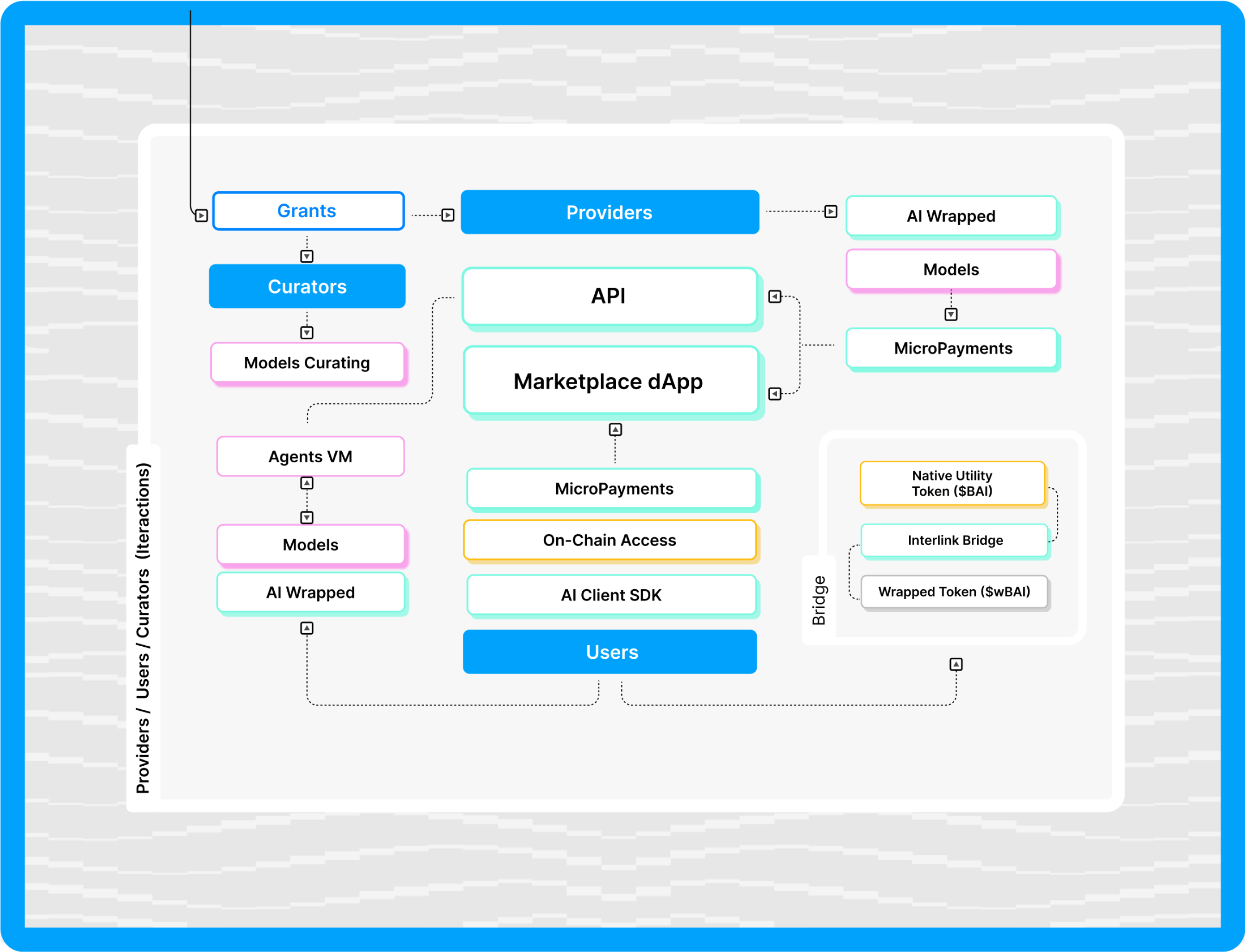AI Models
Overview
One of the goals of BalanceAI Network is to enable Marketplace of AI Models. It is achieved by a sophisticated set of incentives and network components. They create an ecosystem facilitating interaction between models providers and models users.
Workflow
The following chart shows the workflow of the ecosystem:

Marketplace
An AI model marketplace serves as a central hub where users can discover, share, and acquire pre-trained AI and machine learning (ML) models. These marketplaces facilitate the exchange of knowledge, enabling organizations to leverage existing models for various applications.
Here are the key components and functionalities of an AI model marketplace:
- Semantic-Based Repository:
The heart of the marketplace, this repository manages a diverse collection of AI models. Each model is described using semantic metadata, including its purpose, domain, input/output specifications, and performance metrics. Users can search, filter, and explore models based on their requirements.
- Blockchain-Based Framework:
To ensure transparency, security, and trust, a blockchain layer is integrated. Smart contracts and chain logic handle transactions, licensing, and ownership rights.
- Web-Based User Interfaces:
User-friendly interfaces allow stakeholders to interact with the marketplace. Researchers, developers, and businesses can: Browse available models. Evaluate model performance. Purchase or license models. Contribute their own models.
- Business Logic Layer:
This layer orchestrates interactions between users, models, and the blockchain. It handles model deployment, licensing agreements, and payments. Users can deploy models directly from the marketplace to their applications. It is done using BalanceAI Wrapper SDK.
Usage Examples
- Smart Manufacturing:
A factory wants to optimize its production line using computer vision. They explore the marketplace and find a pre-trained defect detection model. After licensing the model, they integrate it into their quality control process.
- Healthcare:
A medical research team needs an AI model for diagnosing rare diseases. They discover a suitable model in the marketplace. By purchasing a license, they enhance their diagnostic capabilities.
- Natural Language Processing (NLP):
A startup building a chatbot wants to add sentiment analysis. They explore NLP models in the marketplace. After selecting one, they integrate it into their chatbot application.
Benefits
- Cost-Effective: Organizations avoid reinventing the wheel by leveraging existing models.
- Time-Saving: Rapid access to pre-trained models accelerates development.
- Collaboration: Researchers and practitioners contribute to the ecosystem.
- Innovation: New use cases emerge as models are combined and customized.